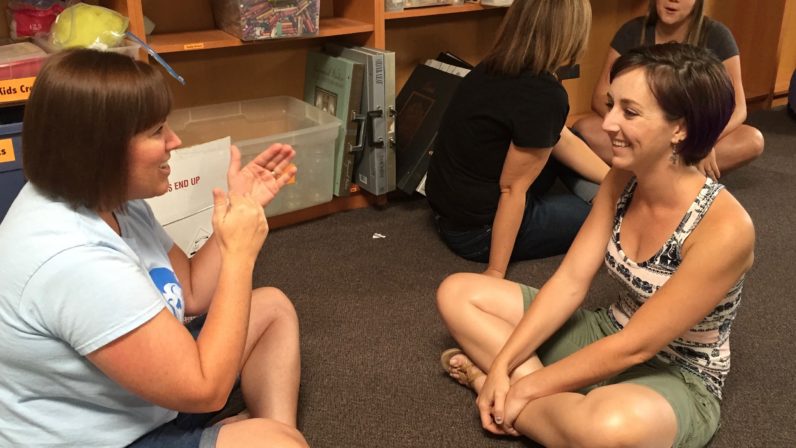In the summer of 1984 I was operating a small summer program out of my home. The Seed was about to begin its seventh year and I was looking to hire a kindergarten teacher. I heard of a young art teacher who had just graduated from ASU, had experience with young children, and was looking for a job. Her name was Kerri Hall. When she came for the interview I showed her the handmade books we made and she cried. I hired her on the spot. Right away, she understood the preciousness of preserving children’s stories.
During our teacher prep week, readying ourselves for the Seed’s 40th year, we reviewed this year’s theme, “Work That Matters.” Among the goals we drafted to put our theme into action, was this one: Students will engage in authentic and relevant experiences that bring stories to life.
To launch our work with stories, we spent two hours on Wednesday morning examining writing at the Seed. We looked at our practices historically, including the years during the whole language movement in the 80s and 90s when writing was prevalent in many classrooms around the country. I found and shared several handmade books from the Seed archives, like those I showed Kerri that first day. Additionally, we reviewed the development of young writers, starting with toddlers and preschoolers and ending with elementary students. During the conversation we noted how many of the recommended practices for literacy development are already in place at the Seed.
We talked about ways to strengthen our community of Seed writers. Among the ideas was setting up intentional spaces to invite children to engage in activities that writers and illustrators do. This includes an assortment of materials to create books, write stories, and make illustrations. One such space appeared miraculously in our 1st/2nd grade class before the prep week was over. Before the first day of school ended, the first book was already on its way toward publication. Another way of drawing out our writers is through storytelling, then helping them make the link between speaking and writing. Students in the 3rd/4th grade classroom eagerly jumped into this practice on the second day of school. We will also expand our techniques for presenting their stories, through book binding workshops and digital platforms for the 21st century.
In addition to helping children tell/write their stories, our year ahead will also be filled with teacher and classroom stories. As a staff we will intentionally bring our stories forth, so those of you who aren’t a part of our daily work will have a clearer view into life at the Seed. We look forward to a year of stories and hope you will appreciate the preciousness of them, just as Kerri did 32 years ago.

